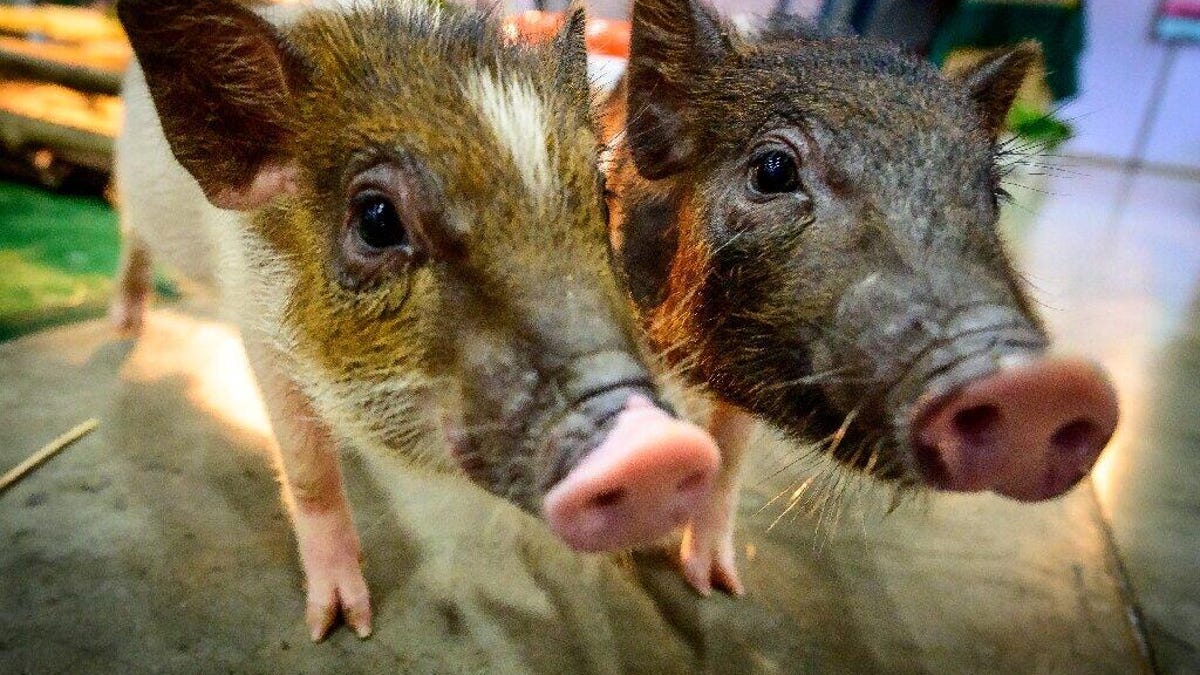Scientists say mammals can breathe through their butts in emergencies
Butt-breathing could be no joke in the future for patients with respiratory failure.

Scientists demonstrated anal respiration using pigs and rodents.
You've probably heard that too much sitting can kill you, but there's another reason that getting off your ass could one day help save your life.
Scientists in Japan have demonstrated that mammals can absorb oxygen through the anus in the case of a medical emergency.
"The rectum has a mesh of fine blood vessels just beneath the surface of its lining, which means that drugs administered through the anus are readily absorbed into the bloodstream," explained researcher Ryo Okabe from Tokyo Medical and Dental University, in a statement. "This made us wonder whether oxygen could also be delivered into the bloodstream in the same way."
Okabe and a team from TMDU experimented with mice, pigs and rats by depriving the mammals of oxygen and then essentially giving them oxygen-rich enemas in both liquid and gas form. Both methods succeeded in introducing oxygen to the animals' circulatory system. With a little assistance, the mammals were essentially breathing through their butts.
The research was inspired in part by the knowledge that some other species, including loaches, catfish, sea cucumbers and orb-weaving spiders can absorb oxygen through their backside parts.
"This is a provocative idea and those first encountering it will express astonishment," Dr. Caleb Kelly, a clinical fellow at Yale not involved with the study, wrote in a column for the journal Med that accompanied the Japanese researchers' paper in the journal last week.
Based on the fact that loaches have intestinal respiration under hypoxic conditions, the efficacy of the EVA method was examined in mammals such as mice and pigs. The EVA method may be effective for patients with respiratory failure.
Though it's hard not to snicker at the approach, the researchers say an alternate way of introducing oxygen to the body could save lives when dealing with respiratory failure from illnesses including pneumonia and even COVID-19.
"The recent SARS-CoV-2 pandemic is overwhelming the clinical need for ventilators and artificial lungs, resulting in a critical shortage of available devices, and endangering patients' lives worldwide," said co-author Takanori Takebe. "The level of arterial oxygenation provided by our ventilation system, if scaled for human application, is likely sufficient to treat patients with severe respiratory failure, potentially providing life-saving oxygenation."
Takebe cautioned that potential side effects and safety concerns "need to be thoroughly evaluated in humans."
The researchers plan to take those steps next, and if all goes well, the approach could be a breath of fresh air introduced to the least fresh of orifices.
Kelly added that if the method, known as Enteral ventilation via anus (EVA), "ultimately reaches the intensive care unit, (it) will be marked by historians as a key scientific contribution."

